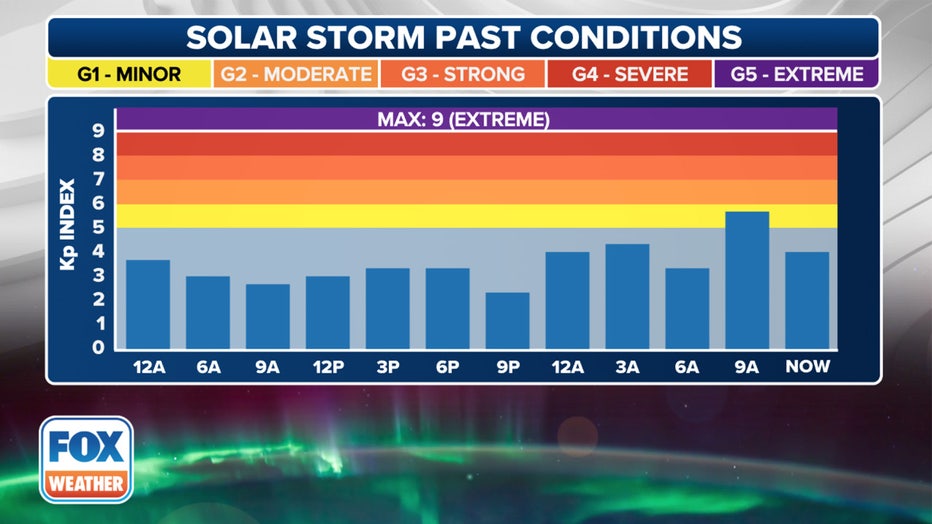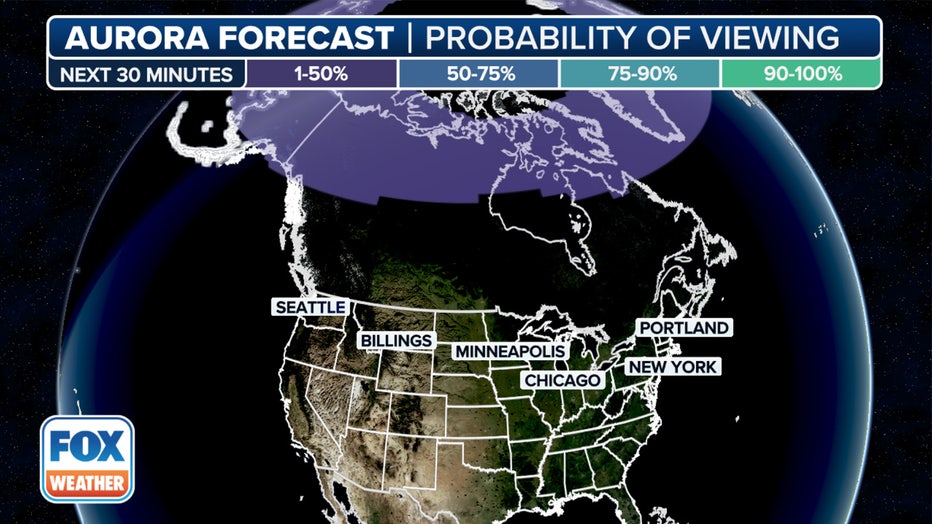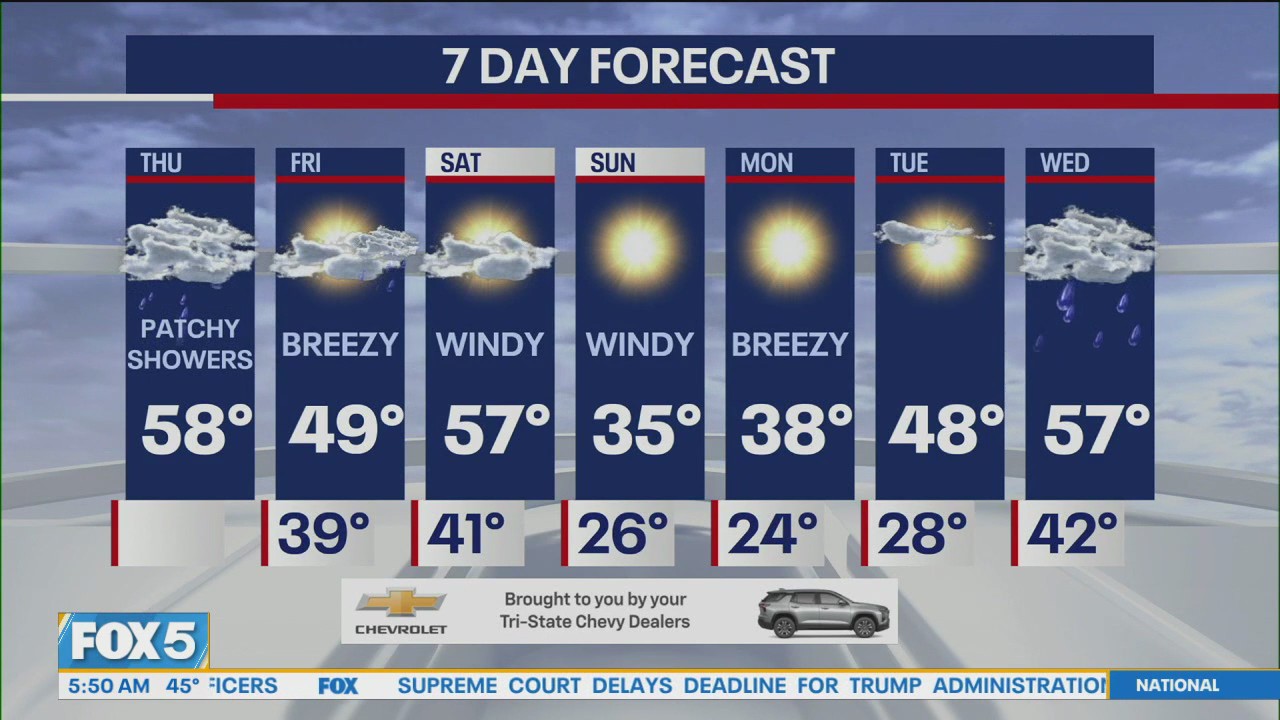Northern Lights in NY: Could the aurora borealis be visible tonight?

Aurora borealis lights up NYC skies
Skies across the northeast were lit up by a rare aurora borealis thanks a geomagnetic storm, delighting stargazers.
NEW YORK - NOAA’s Space Weather Prediction Center (SWPC) said the Northern Lights may be visible in parts of New York state after a Geomagnetic Storm Warning was issued on Thursday.
JUMP TO: WHAT TIME TO LOOK UP?
What we know:
The SWPC rates solar storms on a five-level scale, with five being the most extreme and rarest space weather conditions. Moderate, level 2 out of 5, geomagnetic storming is possible on Thursday.

This graphic shows solar storm condition trends. (FOX Weather)
At that level, the SWPC said power grid fluctuations could occur, and high-latitude power systems may even experience voltage alarms.
In addition, satellite orientation irregularities may occur, and increased drag on low-Earth orbit satellites is possible.

This graphic shows the 30-minute aurora forecast probability. (FOX Weather)
Because of the geomagnetic storm, the SWPC said the Northern Lights may be visible farther south than usual on Thursday, which includes parts of New York.
What time will the Northern Lights be visible?
The backstory:
NOAA advises those who hope to see the Northern Lights to get away from city lights. The best viewing time is usually within an hour or two before or after midnight.
What causes the Northern Lights?
The sun sends more than heat and light to Earth — it sends energy and charged particles known as the solar wind. But sometimes that solar wind becomes a storm. The sun's outer atmosphere occasionally "burps" out huge bursts of energy called coronal mass ejections. They produce solar storms, also known as geomagnetic storms, according to NOAA.
The Earth's magnetic field shields us from much of it, but particles can travel down the magnetic field lines along the north and south poles and into Earth’s atmosphere.
When the particles interact with the gases in our atmosphere, they can produce light — blue and purple from nitrogen, green and red from oxygen.


